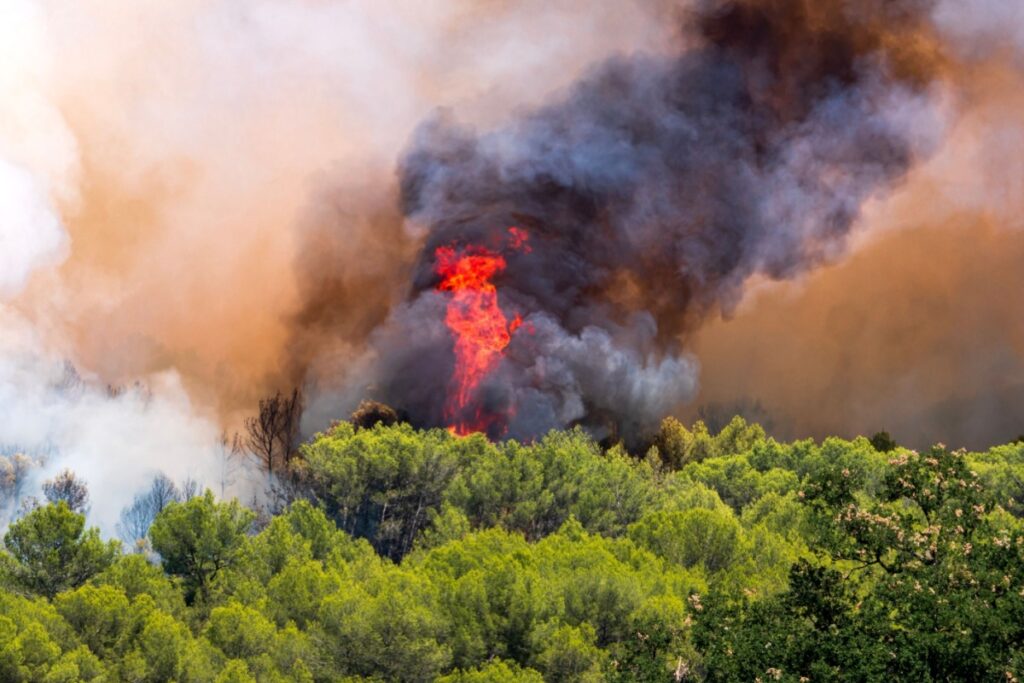Blaze Eclipses Paris in Size
France is battling its biggest wildfire of the summer after flames tore through the Aude department near the Spanish border, scorching about 13,000 hectares (32,000 acres)—an area larger than Paris. The fire ignited Tuesday afternoon near Ribaute and accelerated overnight amid hot, dry winds. Authorities reported one fatality and multiple injuries as the blaze remained “very active” into Wednesday.
The scale and speed of the fire have been driven by a prolonged drought in the region and vegetation primed to burn after months of below-normal rainfall. Officials said water-use restrictions were already in place across parts of Aude, and the tinderbox conditions helped the flames leap across vineyards and scrubland in the Corbières hills.
Evacuations and a Massive Response
Roughly 2,000 firefighters—backed by fleets of water-bombing aircraft—have been deployed to contain advancing fronts and protect settlements. Evacuations were ordered in and around Jonquières, where local officials described widespread damage to homes; two nearby campsites were cleared as a precaution. Teams reported shifting winds and fast runs that complicated line-building and forced repeated tactical withdrawals for safety.
Regional authorities urged residents and holidaymakers to stay indoors unless told to leave and to keep roads clear for emergency convoys. The multi-day operation included night work to secure perimeters and protect critical infrastructure while additional reinforcements were staged for flare-ups in rugged terrain. Prime Minister François Bayrou visited the command post at Saint-Laurent-de-la-Cabrerisse to meet responders and affected residents.
Weather Drivers and Climate Signals
Meteorologists had placed Aude under high wildfire alert this week as a heat wave, low humidity and strong tramontane winds converged over the western Mediterranean. Forecasts called for temperatures in the mid-90s Fahrenheit (mid-30s Celsius) around Narbonne and Castelnaudary, with gusts capable of pushing embers well ahead of the main front—classic conditions for rapid spread.
Scientists say these compound extremes are becoming more likely as Europe—now the world’s fastest-warming continent—has been heating at roughly twice the global average since the 1980s. Warmer, drier summers lengthen the fire season, dry out fuels, and raise the odds of large, fast-moving blazes like the one gripping Aude. Recent climate assessments from the Copernicus Climate Change Service and partners underscore the trend and warn that even small increments of further warming increase risk.
A Hard-Hit Region and What Comes Next
Southern France has already endured multiple large fires this summer—including a blaze that reached Marseille in July, injuring hundreds and briefly shutting the city’s airport—stretching local services before the Aude inferno ignited. With tourism season in full swing across Occitanie and the Mediterranean coast, authorities are balancing public safety, evacuations, and transport disruptions while trying to minimize economic fallout for wineries and hospitality businesses.
For Aude, the near-term outlook hinges on weather breaks: cooler, calmer air would aid containment, while another burst of wind could drive new runs and spot fires. Officials cautioned that the operation could last days, even after the most dangerous fronts are knocked down, given smoldering hot spots and the potential for reignition in the Corbières massif. As crews rotate and reinforcements arrive, investigators will also assess ignition sources, damage to homes and vineyards, and the condition of fire lines ahead of forecast changes later in the week.



